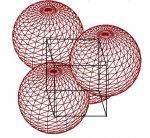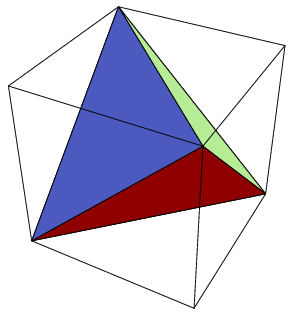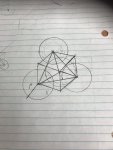Suppose there exists a sphere of a fixed volume V, and there also exists four equal spheres arranged as a tetrahedron that fit just inside this larger sphere. Now, suppose the four spheres are models for the 2 protons and 2 neutrons of a helium atom.
How would I find the distance between the centers of the two positively charged protons in this structure? I need help getting started on finding this distance. My 3D spatial thinking is not too advanced and I am honestly have trouble getting started on this problem.
My professor has talked to us about we think of a tetrahedron typically as 3 spheres on one lower plane with one in the center in a plane above the other three. He explained this way of going about it is quite hopeless and would result in a million triangles and trigonometric relationships. Instead, he suggested we take a cube, which has 8 vertices; he said to take four which do not share any edge of the cube and take these vertices as the vertices of the tetrahedron. The 6 diagonals that connect this vertices can reveal a 3D form in the shape of a tetrahedron. Now instead of having three spheres on one plane and the other above, the spheres now look like they are criss-crossed on two different planes. I can see what he is talking about but I have seen no progress in thinking about the problem in this manner either
How would I find the distance between the centers of the two positively charged protons in this structure? I need help getting started on finding this distance. My 3D spatial thinking is not too advanced and I am honestly have trouble getting started on this problem.
My professor has talked to us about we think of a tetrahedron typically as 3 spheres on one lower plane with one in the center in a plane above the other three. He explained this way of going about it is quite hopeless and would result in a million triangles and trigonometric relationships. Instead, he suggested we take a cube, which has 8 vertices; he said to take four which do not share any edge of the cube and take these vertices as the vertices of the tetrahedron. The 6 diagonals that connect this vertices can reveal a 3D form in the shape of a tetrahedron. Now instead of having three spheres on one plane and the other above, the spheres now look like they are criss-crossed on two different planes. I can see what he is talking about but I have seen no progress in thinking about the problem in this manner either
Last edited:



